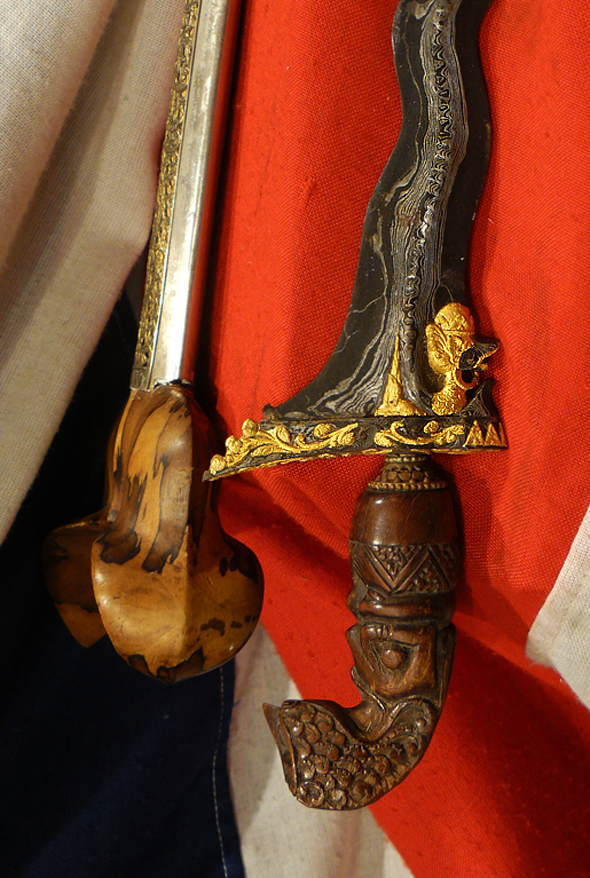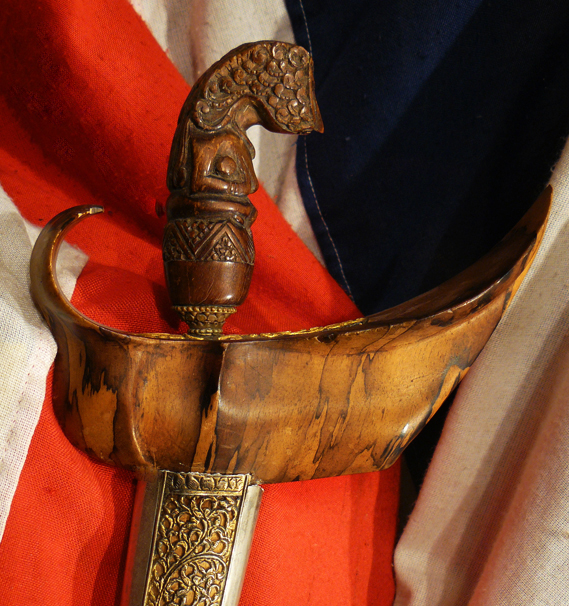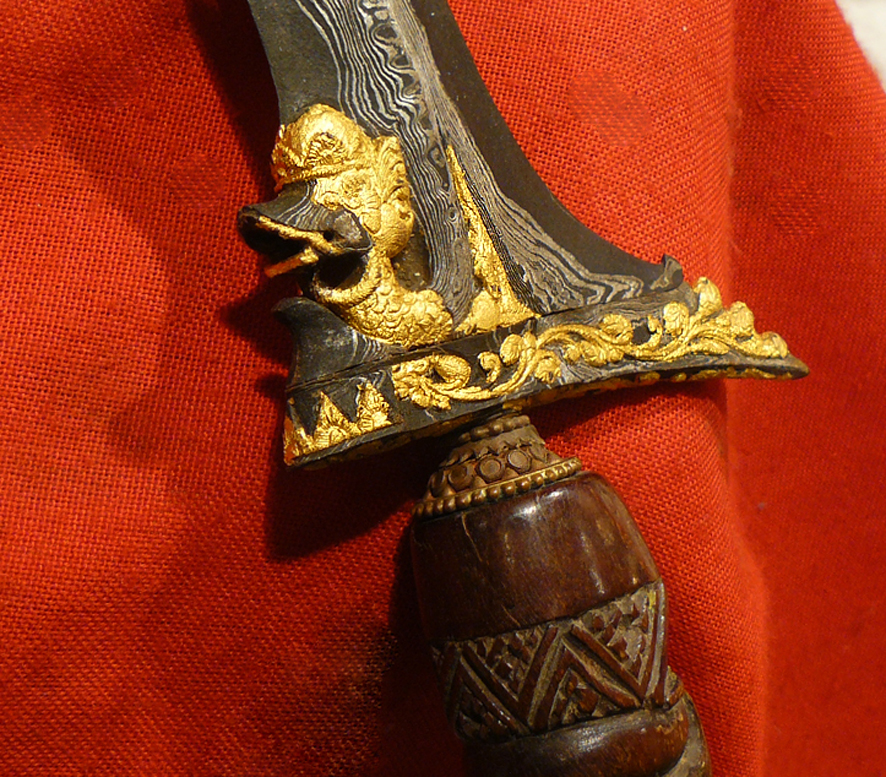A Fabulous Javanese Kris With Pure Gold Snake God Symbol Onlaid on to The Fabulous Pamor Serpentine Blade
Probably 19th to early 20th century. In an esteemed London auction house, a most similar quality gold inlaid example, of the same age, sold three Decembers ago for just over £5,400 [inc commission]. This is simply one of the most beautiful we have seen on the market in over 20 years. A sarpa lumarka wavy blade with a gold naga [snake] in sangkelat [13 waves, or lok]. Ladrang form of wrangka hilt crosspiece [boat form] of a simply stunningly grained wood, which may well be Javan pelet, with a fine gilt metal sleeve covering the haft, with a most intricate and detailed pieced design on the obverse side. In Java, the metal sleeve is called pendokbunton, which is a full metal sleeve. The keris is considered a magical weapon, filled with great spiritual power. In Javanese there is a term "Tosan Aji" or "Magic Metal" used to describe the keris. The keris is replete with the totems of Malay-Indonesian culture of hindu and islam. The blade is a mixture of meteoric steel and nickel According to traditional Javanese kejawen, kris contain all the intrinsic elements of nature: tirta (water), bayu (wind), agni (fire), bantolo (earth, but also interpreted as metal or wood which both come from the earth), and aku (lit: "I" or "me", meaning that the kris has a spirit or soul). All these elements are present during the forging of kris. Earth is metal forged by fire being blown by pumped wind, and water to cool down the metal. In Bali, the kris is associated with the naga or dragon, which also symbolizes irrigation canals, rivers, springs, wells, spouts, waterfalls and rainbows; thus, the wavy blade symbolizes the movement of the serpent. Some kris have a naga or serpent head carved near the base with the body and tail following the curves of the blade to the tip. A wavy kris is thus a naga in motion, aggressive and alive; a straight blade is one at rest, its power dormant but ready to come into action.
In former times, kris blades were said to be infused with poison during their forging, ensuring that any injury was fatal. The process of doing so was kept secret among smiths. Different types of whetstones, acidic juice of citrus fruits and poisonous arsenic bring out the contrast between the dark black iron and the light coloured silvery nickel layers which together form pamor, damascene patterns on the blade. The distinctive pamor patterns have specific meanings and names which indicate the special magical properties they are believed to impart
Code: 22745
3750.00 GBP






